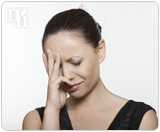Commonly dubbed the male sex hormone, the little known truth about testosterone is that it plays a vital role in both male and female wellness and sexual function. Testosterone has been linked with improving mental sharpness, preventing bone fractures and breaks, elevating mood, and boosting libido. Yet there are some important differences between the role of testosterone in men and women. Read on to learn more.
Testosterone in Men
 During puberty, men begin to secrete high amounts of testosterone. It is the chief hormone responsible for the changes that occur in the male body during puberty — such as the deepening of the voice, the growth of chest, facial, leg, and pubic hair and increased muscle strength and mass. It should come as no surprise that the most important duty of testosterone is the role it plays in male sexuality; testosterone is known to boost libido, increase frequency of erections, and encourage the growth of spermatogenic tissue in the testicles.
During puberty, men begin to secrete high amounts of testosterone. It is the chief hormone responsible for the changes that occur in the male body during puberty — such as the deepening of the voice, the growth of chest, facial, leg, and pubic hair and increased muscle strength and mass. It should come as no surprise that the most important duty of testosterone is the role it plays in male sexuality; testosterone is known to boost libido, increase frequency of erections, and encourage the growth of spermatogenic tissue in the testicles.
Testosterone in Women
One important distinction to make is that women only produce one-seventh of the testosterone men do. While testosterone serves various functions in women, it is generally considered to be less important than the female hormones estrogen and progesterone, which regulate the menstrual cycle and prepare the uterus for a fertilized egg each month.
Cautions for Women
Although women produce less testosterone than men, the hormone is thought to play an important role in boosting female libido and mood. Additionally, it can help prevent the onset of osteoporosis by reducing the number of bone fractures and breaks. Thus, women who are experiencing sexual dysfunction often turn to testosterone therapy as a solution to their troubles.
However, it should be noted that currently there are no testosterone products approved for use for women in the United States or Canada. Testosterone therapy can produce serious side effects in women, including:
- Hair growth on the upper lip, face, chest, nipples and lower abdomen. Additionally, fine hairs may darken or become course.
 Thinning of scalp hair
Thinning of scalp hair- Acne or oily skin
- Shrinking breast size or irregular clitoris size as a result of increased muscle mass and redistributed body fat.
- Irregular menstrual cycles, if menstruating
- Anger or hostility, which may lead to depression
- Hoarseness or deepening of voice
Additionally, women who are still menstruating and may become pregnant should not take testosterone. Taking testosterone could also cause a female fetus to develop male traits.
Recommendation
Understanding the way testosterone works in the female body is often a mystery for women, but it doesn’t have to be that way. Familiarizing yourself with the basic functions of testosterone can help you better understand why the hormone is important to you, and how to identify if you have excessive or deficient amounts of it in your body. Click here to read more about testosterone imbalance.
Shifren JL (2004). The role of androgens in female sexual dysfunction. Mayo Clinic Proceedings, 79(Suppl): S19-S24.
North American Menopause Society (2005). The role of testosterone therapy in postmenopausal women: Position statement of the North American Menopause Society. Menopause, 12(5): 497-511.
North American Menopause Society. ¨Androgens, Antidepressants, and Other Drugs on Which the Jurys Still Out.¨
Testosterone for Women: WebMD.com
Share This |
|---|
Our Readers also liked
- A Woman’s Concern: How to Reduce Testosterone Levels 370 views
- Testosterone and Menstrual Cycle 266 views
- Top 5 Herbs That Increase Testosterone 220 views